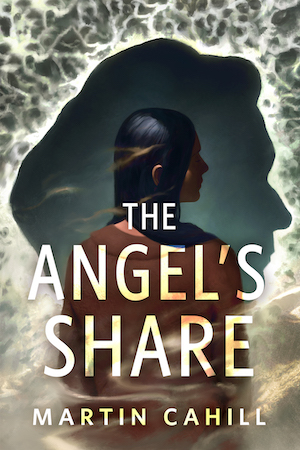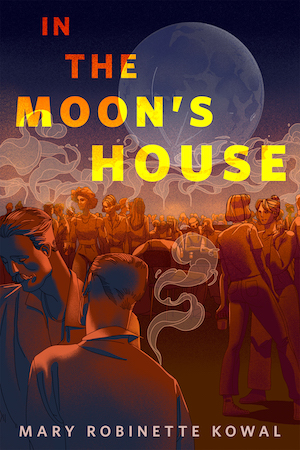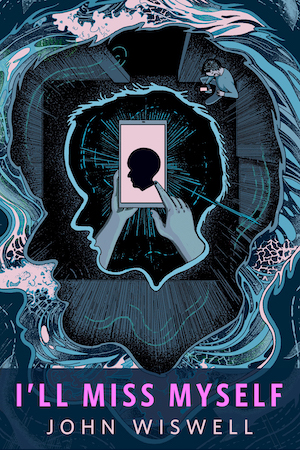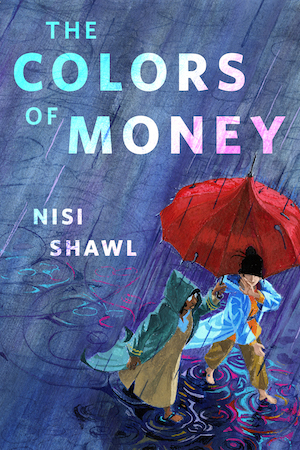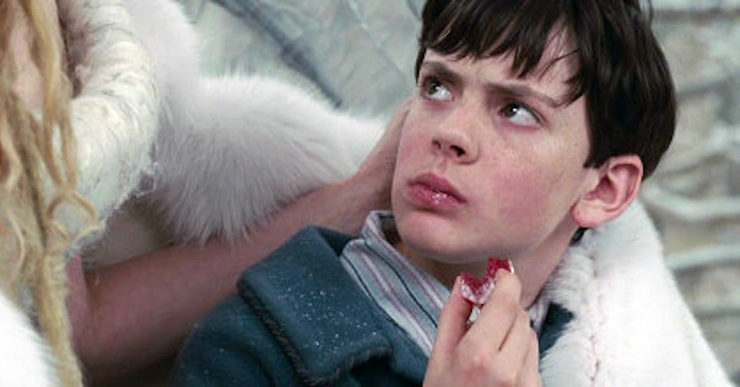Two words for you: Turkish Delight.
In a discussion of food in the fantasy genre, we may as well start with one of most well-known examples. When I read the Narnia books at age 12—an age when I fervently wanted magic to be real—I was overwhelmed with curiosity about this mysterious confection called Turkish Delight. I mean, it had to be really good for Edmund Pevensie to sell off his family to the White Witch.
The Narnia books were not favorites of mine—my preference went to Prydain—but that mention of Turkish Delight stuck with me. Later in my teen years when I visited a Cost Plus World Market for the first time, I encountered the candy for sale. I had to buy it.
I also had to throw it away because I found it to be outright vile.
Yes, I know the version I had wasn’t legit Turkish Delight. What is important is the food and the experience. I wasn’t even a Narnia fan, but I wanted to connect with and understand that scene years later.
Food is incredible like that. As far as I’m concerned, it’s the Force. It’s what binds people together within and across cultures and eras. As a worldbuilding element, it’s essential because what we eat (and don’t eat) is personal, is religious, is a snapshot of our very moment in time. Mess that up, and believability in the literary world shatters. If a book has samurai in feudal Japan regularly munching on yeast-risen white bread or William the Conqueror drinking hot chocolate, there had better be some major alternate history going on or a believable magical angle, or I’ll stop reading right there.
Even in outright bizarre settings, food in fantasy usually utilizes recognizable ingredients. There’s a big reason for that. Describing flavor is like trying to describe color to someone who can’t see quite the same range. Have you ever tried to explain a spice to someone who has never had it before? I did that with cardamom once, and I couldn’t get much better than, “It’s like cinnamon, but not at all like cinnamon.”
Bread is probably the most common food across the genre, but it can easily be an anachronism. Fluffy white sliced bread is a fairly recent thing; a book shouldn’t say something is “better than sliced bread” before 1928 unless you’re setting up a paradox.
In my Blood of Earth trilogy, I created an alternate history 1906 setting where many elements of Japanese culture are infused with American daily life. In actual history, European-style yeast breads weren’t successfully adapted to Japanese tastes until the Meiji Era of the late 19th century. For my setting, it therefore made perfect sense for Japanese sweet rolls like an-pan and jamu-pan to be common pastries in America. In Call of Fire, I introduce sylphs who engage in contractual alliances in exchange for bread.
That melding of familiar foods and the magical is something I particularly love about historical fantasies. J. Kathleen Cheney’s Golden City trilogy utilizes this especially well as she establishes her setting of 1902 Portugal:
The waiter arrived then with two plates: Duilio’s hearty meal of liver and sausage with fried potatoes, stuffed mushrooms, and broa, along with Joaquim’s fish soup.
There’s nothing inherently fantasy about that simple line, but basic details like this matter because they accurately portray the culture, place, and period. That kind of detail is also evident in her worldbuilding of the sereia, selkies, and otter-folk who live at the fringes of human society. Broa, by the way, is a yeast-leavened bread made of cornmeal and rye, and it’s delicious.
On the more explicitly foodie-fantasy side are two recent series: Matt Wallace’s Sin du Jour, with a wacky catering angle on urban fantasy, and Cassandra Khaw’s Gods and Monsters, wherein chef Rupert Wong serves man (literally, on a platter) to ghouls in Kuala Lumpur. The two series are radically different yet both invoke food in funny, seriously twisted ways.
A more traditional approach to the theme is found in Christina Rossetti’s famous poem “The Goblin Market,” which explores the old-as-Adam concept of magical beings tempting and destroying humans through food:
…Come buy, come buy:
Our grapes fresh from the vine,
Pomegranates full and fine,
Dates and sharp bullaces,
Rare pears and greengages,
Damsons and bilberries,
Taste them and try:
Currants and gooseberries,
Bright-fire-like barberries,
Figs to fill your mouth,
Citrons from the South,
Sweet to tongue and sound to eye;
Come buy, come buy.”
I think most of us know that if we ever get that long-awaited invitation to the Fairy Court, we shouldn’t eat the food, no matter how extraordinary it looks and smells. Certainly, things don’t go well for the maidens Laura and Lizzie in Ms. Rossetti’s poem. The historical context around that poem can’t be ignored, either. We in the 21st century are spoiled by the wealth of international produce offered by even the smallest of grocery stores. In the Victorian era—or really any time before the mid-20th century—a bounty of juicy, ripe fruits like those offered by the goblins would defy geography, seasons, and preservation methods. No wonder such a meal is an infernally tempting event.
Fairies can be the tempters—or the tempted. As I noted earlier, I use this with the sylphs in Call of Fire and my new release Roar of Sky. I love this trope, not just because I’m a foodie, but because there are so many ways to give it a fresh spin. One of the great side characters in Jim Butcher’s Dresden Files series is the dewdrop fairy Toot-Toot. While Toot is originally summoned through more traditional means of a magical circle baited with bread, milk, and honey, protagonist Harry Dresden discovers Toot and his kind really, really, really love pizza. Moments like that provide a moment of levity in an otherwise intense story.
Since the old-fashioned fairy spread of ripe fruit doesn’t embody quite the oomph it once did, pizza actually works well as modern-day bait for human and fairy alike—and other creatures, too. The Teenage Mutant Ninja Turtles certainly have a passion for pizza that kids and adults can relate to.
Buy the Book
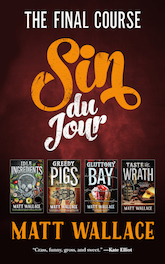

Sin du Jour: The Final Course
That brings me around again to what makes food essential to world-building in fantasy: we all eat. Our favorite book characters eat (some divine or immortal beings excepted, of course). Even if their world is completely bizarre in contrast to contemporary Earth, the food likely is not. Food provides the common bond between our worlds. It makes the fantasy more real.
Fantasy genre-connected cookbooks and blogs make that realism downright edible. As a Dragonlance-obsessed teenager, I was enthralled that the Leaves from the Inn of the Last Home: The Complete Krynn Sourcebook actually contained recipes based on food from the novels. I begged my mom to give the fried potatoes recipe a try. They weren’t as tasty as I’d hoped, but I still geeked out over it because I was eating Dragonlance food, something that Raistlin Majere might eat.
A more current example of this recipe trend is the food blog Inn at the Crossroads, whose efforts to cook their way across George R. R. Martin’s Westeros garnered them a book deal for an official Song of Fire and Ice cookbook. Devout fans cook up themed meals to enjoy while they watch the show on HBO.
An official cookbook for Outlander takes a more historical tack by providing recipes from postwar Britain to the Scottish Highlands and beyond. Video games also come to life through their foods, as bloggers and Twitch-streamers make mana potions and other dishes into genuine fare. Video game powerhouse Square Enix maintains an official Dragon Quest-themed restaurant in Tokyo called Luida’s Bar which features a full menu of food and drinks, including many that pay tribute to the role-playing game series’ beloved slime.
These examples highlight a major perk of being a reader/gamer and foodie in our modern age: food enables us to celebrate the worlds and characters of the books, movies, and video games we love. Not only does it make the fantasy world feel more real, but social media allows us to be, well, social about it. The internet isn’t just for cats. It’s also about sharing food pictures on Instagram and Twitter, blogging about recipes, broadcasting the cooking process live on Twitch or YouTube, and pinning everything on Pinterest.
On my Bready or Not food blog, I’ve shared recipes related to my Clockwork Dagger duology and my Blood of Earth trilogy. Readers love that they can eat what my characters eat. So do I. I want that level of interaction when I enjoy other books and games, too, whether that involves damsons and bilberries, broa, or a slime-shaped meat bun at Luida’s Bar.
I write fantasy because I want magic to be real. Eating food from the fantasy genre is a way to make worldbuilding into an actual, visceral experience. That is a delicious kind of magic—even in the case of Turkish Delight.
Originally published in October 2018.
 Nebula-nominated Beth Cato is the author of the Clockwork Dagger duology and the Blood of Earth trilogy from Harper Voyager—book three, Roar of Sky, is available now. She’s a Hanford, California, native transplanted to the Arizona desert, where she lives with her husband, son, and requisite cat. Visit her website and follow her on Twitter at @BethCato.
Nebula-nominated Beth Cato is the author of the Clockwork Dagger duology and the Blood of Earth trilogy from Harper Voyager—book three, Roar of Sky, is available now. She’s a Hanford, California, native transplanted to the Arizona desert, where she lives with her husband, son, and requisite cat. Visit her website and follow her on Twitter at @BethCato.


